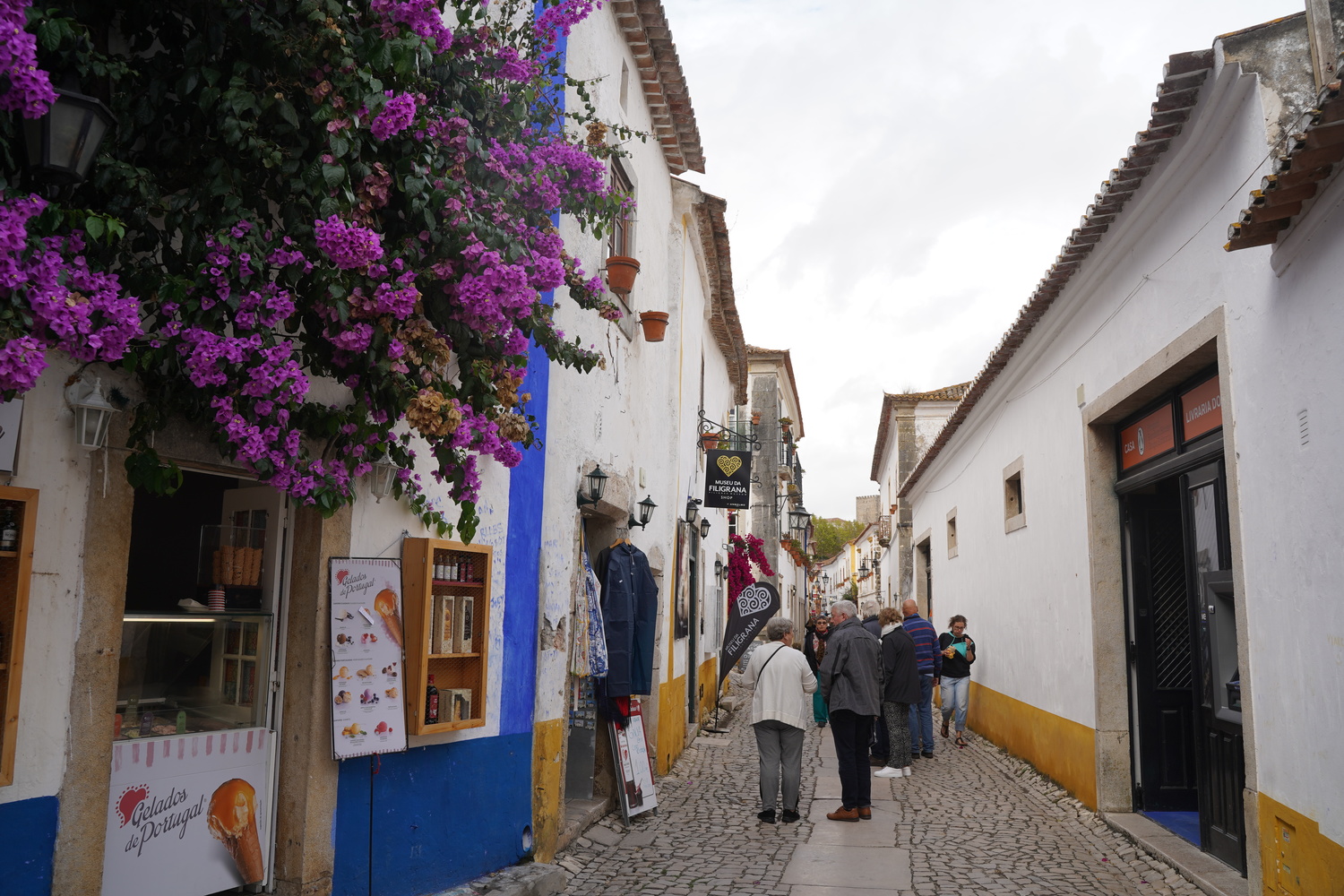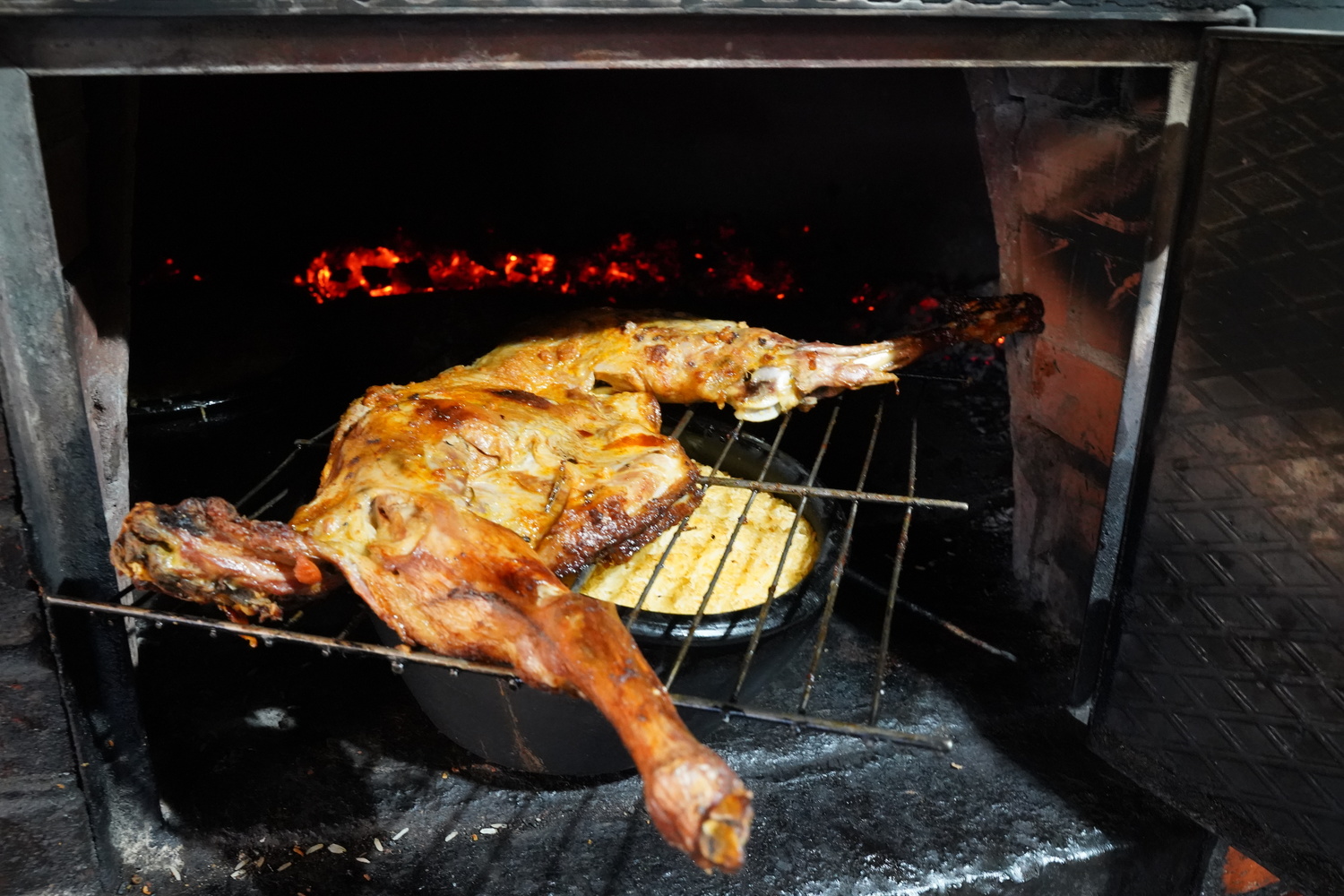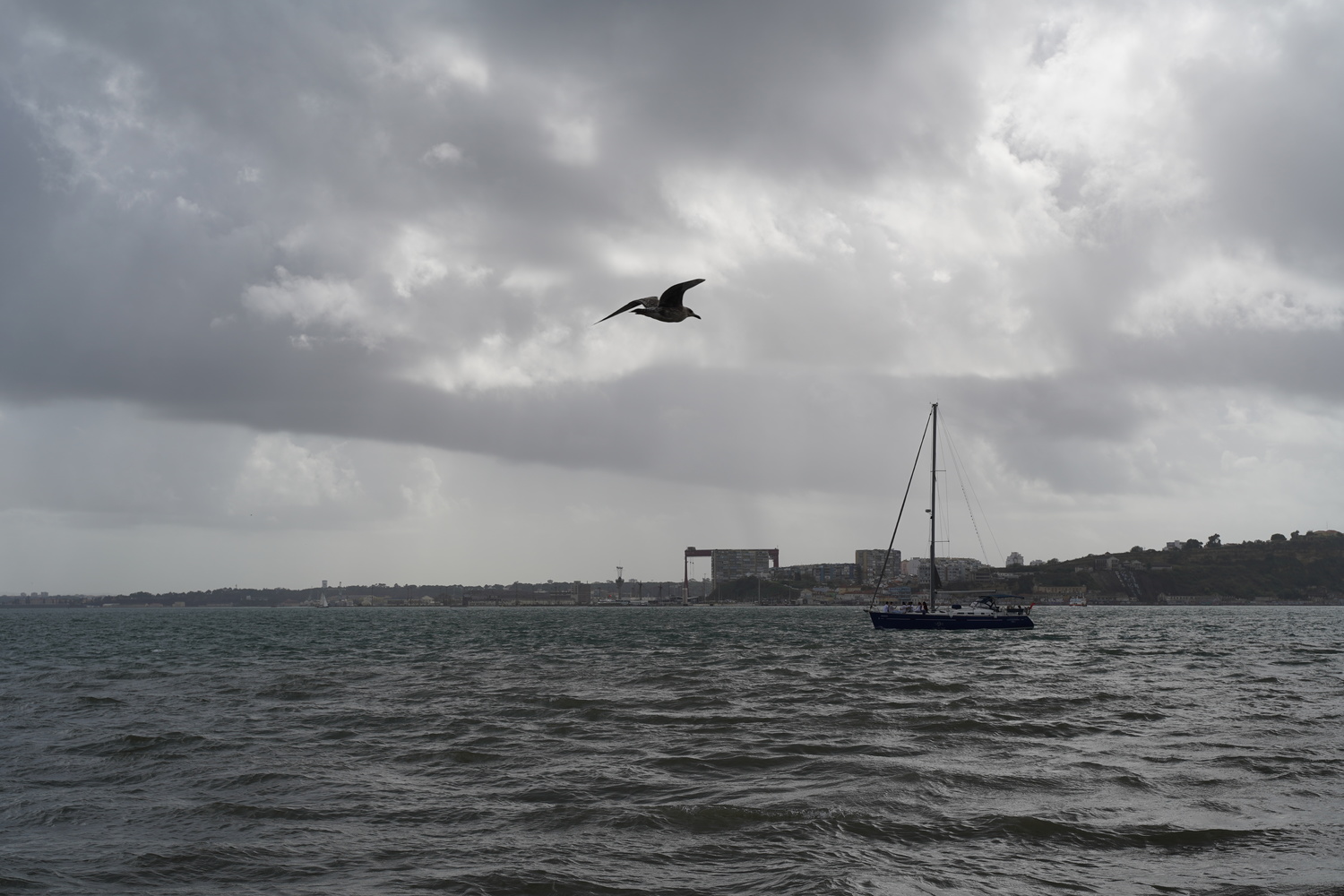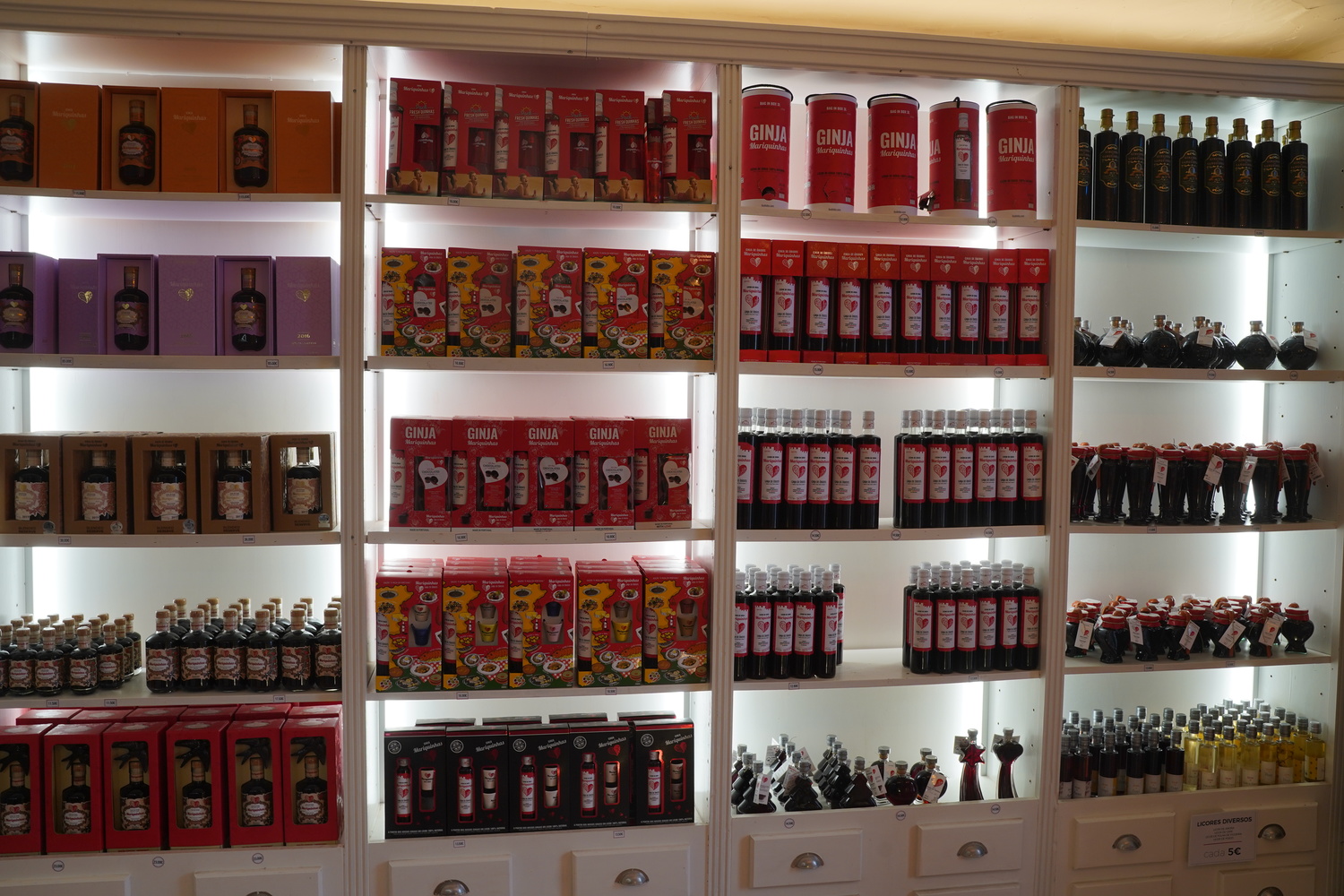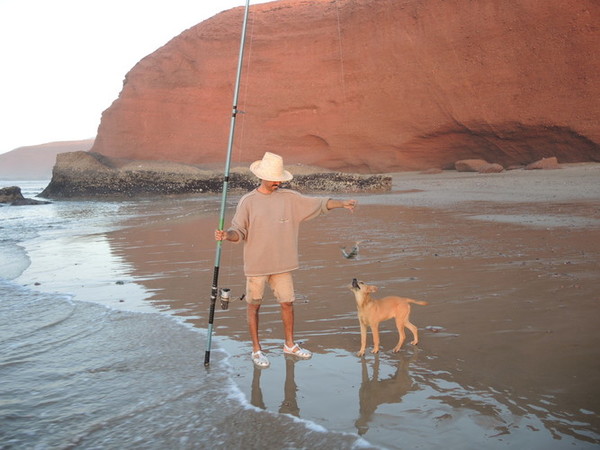In Portugal, the stunning nature, impressive coastlines, and well-preserved historical heritage all come together. Add to this the highly developed Portuguese cuisine and variety of beverages, and it becomes a true paradise for travel and food enthusiasts.
You can drive to Portugal by car, and if you're not in a hurry. The journey will take about a week. Along the way, you'll have the chance to visit almost all of Europe. You can use your own car or rent one from Litcarrent. You can also count on help if any issues arise with the vehicle. The feeling of security is very important for such a long trip. You should prepare for such a journey and have at least three weeks of vacation.
Although a more common option is to rent a car upon arrival in Portugal, it’s always better to book a car in advance. More information will be provided below about car rental conditions in Portugal.
Douro River Valley from the Garfula Viewpoint
Things to Do in Portugal
During peak season, tourist sites are often crowded, and long lines to enter attractions are a common problem. Therefore, in the summer, it’s better to head south to the beaches of Portugal, by the Mediterranean Sea. Here you’ll find famous pink sand beaches and cliffs made of pink sandstone that extend into the sea.

Lisbon at Night from Miradouro da Senhora de Monte
From Lisbon, heading north takes you to Porto, the birthplace of the famous port wine. Here, you can taste various ports and enjoy traditional Portuguese cuisine. It's worth dedicating a few days to the area, as there are many impressive architectural, natural, cultural, and historical landmarks within a couple of hundred kilometers. In this journey, a selection of the most remarkable sites was made and visited.
Not far from Lisbon, there are at least three stunning attractions: the royal residence of the Sintra Palaces and Park, the Pena Palace, and the Moorish Castle. Upon arriving in the modern town of Sintra, you can leave your car and visit all the attractions on foot, by bus, taxi, or tuk-tuk.
Sintra is mostly represented by photos of the Sintra Palace. However, the palace itself pales in comparison to the park.
Sintra Palace and Park
The closest attraction to the tourist town is the Sintra Palace and Park, established by the royal family for leisure. Typically, visits start with a walk through the park. The pathways climb up the hill, with terraced trails in between. The park is filled with stone pavilions, decorative fortresses, and towers. Underground labyrinths lead to unexpected places. One of the most impressive features is the spiral well. Even during the off-season, there was a wait in line. At the bottom of the well, visitors enter underground caves that lead to a small waterfall. A very interesting tour of the Sintra Palace itself is also available, which takes about 3 to 4 hours. Parking is paid, and fines for not paying start at 30 euros.

The Sintra Well (Initiation Well, Quinta da Regaleira) is believed to have been used for the initiation of new Freemason members. At the bottom of the well, there are Masonic symbols, and nearby is a ceremonial chamber.
Through the Initiation Well, tunnels lead under the waterfall to a small pond. Later, it can also be visited from the other side. The entire park is full of various surprises, which, it seems, once kept the royal family and their guests entertained.
After the tour, it's worth stopping by the town for a bite to eat.
After tasting Pastel de Nata pastries, they become an everyday treat, and people specifically search for cafes with the best reviews for them. It's a puff pastry cup filled with a creamy filling. In the town of Sintra, there's a marked spot where the best Pastel de Nata was rated. Another place with similarly delicious pastries was in Lisbon. To taste truly delicious Pastel de Nata, you should visit cafes where most of the menu consists of these pastries. They are not only available in the traditional form, but also with salted cod, beef, and other fillings.
One of the most famous dishes in Portugal is Bacalhau à Brás – salted cod with potatoes and eggs. That is also worth giving a try.
Pena Palace
A bit further up the hill, one can visit the Moorish Castle and Pena Palace. It takes about 40 minutes to walk up. Alternatively, you can take a tuk-tuk, which in 2022 cost 10 euros per person, or a regular bus. We drove by car, and there are fairly large parking areas near the entrance to Pena Park. Entrance to both Pena Palace and the park is paid. By the time we finished visiting Sintra, it was getting late, so we decided to quickly drive to Pena Palace, which took about 15 minutes. Pena Palace is best preserved from the late 19th century and served as a royal residence.
Pena Palace is located on a high hill, and on a rainy day, clouds may gather around it. However, it remains impressive even when it seems as if you're floating in the mist. On a clear day, the surrounding area is visible.
Visitors are introduced to the daily life of the kings and their servants. From Pena Palace, there are stunning views of the surrounding landscapes. The park below is also worth exploring. The stone-paved paths wind along the slopes, sometimes going uphill and sometimes descending. There are many impressive trees, streams, and ponds. It's worth taking your time, so plan to spend about 3 hours here. The park offers a bit more natural beauty compared to the one in Sintra.
Pena Park is impressive with its magnificent trees. The fog in the park adds a sense of mystery.
As for the Moorish Castle, there isn’t much left of it, and it's best visited on a clear day. When we were there, the surroundings were covered in clouds, so we decided not to waste time.
It's a good idea to dedicate one full day to the Sintra area, and it’s worth looking for accommodation nearby. Our first overnight stay was about 40 kilometers from the airport, in the town of Praia das Maçãs, at a hotel right on the coastline. The beach is large, and the coastal cliffs are perfect for walking. In many places, the cliffs drop steeply into the sea, and you can only walk along the top. In Praia das Maçãs, the cliffs are flat, with unmarked trails that are really enjoyable to stroll along.
Praia das Maçãs coastline. The cliffs here are not very high, so you can approach them without special skills. However, your shoes should be suitable for walking. You can also descend from the road that runs along the coast. Right near this spot, there is a large parking lot where cars are left, and campers can park with a view of the sea.
After visiting Sintra, we drove several dozen more kilometers to the seaside town of Ericeira. It’s a very charming modern resort town on the coastline. The straight cobblestone streets make it easy to navigate. There’s a large white-sand beach, and above it, a promenade lined with many restaurants. The town is worth visiting for a peaceful getaway.
Ericeira has long sandy beaches. The town has clearly been expanding most actively in recent decades. The architecture is well-maintained, with modern homes.
Peninsula
The Perís Peninsula is on the way to Porto. It is a peninsula that extends far out into the sea, with high and impressive cliffs. Several smaller peninsulas branch off, which protect part of the coastline from the strong ocean waves. Because of this, even when the ocean is quite rough, there are spots where surfers can practice. From the Perís Peninsula, you can take a ferry to a nearby island.
As soon as you enter Perís, there's a surf school. There are hundreds of surfers in training, and it looks like a seal colony somewhere in the remote north.
At the end of the peninsula, there is an impressive rocky coastline. The waves crash into the rocks, and the spray shoots up to 30 meters.
Óbidos
A short drive inland, the town of Óbidos with its fortress is definitely worth a visit. The Moors built the fortress on a hill overlooking the surrounding area, which was later taken over by the Portuguese. Parking is available below the main entrance, with a smaller lot on the other side. It's worth walking along the top of the fortress wall in the high Norman style.
Óbidos town from the city wall
The wall and fortress rise above the surrounding area, offering a great view.
The town is very charming, with several parallel streets connected by narrow passageways. Óbidos is known for its cherry liqueur, which may have originated here. The more expensive versions of the liqueur are aged in oak barrels. The longer it is aged, the higher the price. It would be quite interesting to stay in this town. Typically, such towns reveal their true charm once the tourists leave, allowing you to feel like a real local. There are places to stay within the town, including some very luxurious options with pools.
Óbidos town is protected by the castle walls. By medieval standards, it was a large town. There are several fairly wide streets and alleyways connecting them. A great souvenir to pick up is their local cherry liqueur, Ginja. The more expensive Ginja is aged in oak barrels, and the price per liter starts at 40 euros. The taste differs from the non-oaked versions. The labels indicate when the cherries were harvested and how long the liqueur was aged in the barrels.
Aveiro
After Perísi and Óbidos, there wasn’t much time left, so our goal was to reach Porto. Therefore, we bypass Aveiro and take the paid route. Aveiro is located next to a river and is famous for its colorful houses. It’s called the "Venice of Portugal," just like some people refer to our Kintai as the "Lithuanian Venice." However, the few canals running through the town don’t exactly make it a Venice. Aveiro is also known for its eel stew.
Matozinhos
Matozinhos is considered a suburb of Porto, located by the Atlantic Ocean. It’s famous for its fish and seafood restaurants. It’s a great option to come here for an overnight stay and enjoy dinner at one of the seafood restaurants that stay open late. The prices are quite reasonable, and the portions are huge. At the visited restaurants, portions are divided into large and small. A small portion costs between 15-20 euros and is meant for one person to have a hearty meal. A full portion is designed for two. Fish and seafood are also sold by the kilogram. Lobsters in October 2022 cost 120 euros per kilogram, while halibut, sole, and percebes cost around 40 euros. White sea bass and dorada are cheaper. Grouper (more like a stone bass) was among the most expensive fish, around 60 euros.
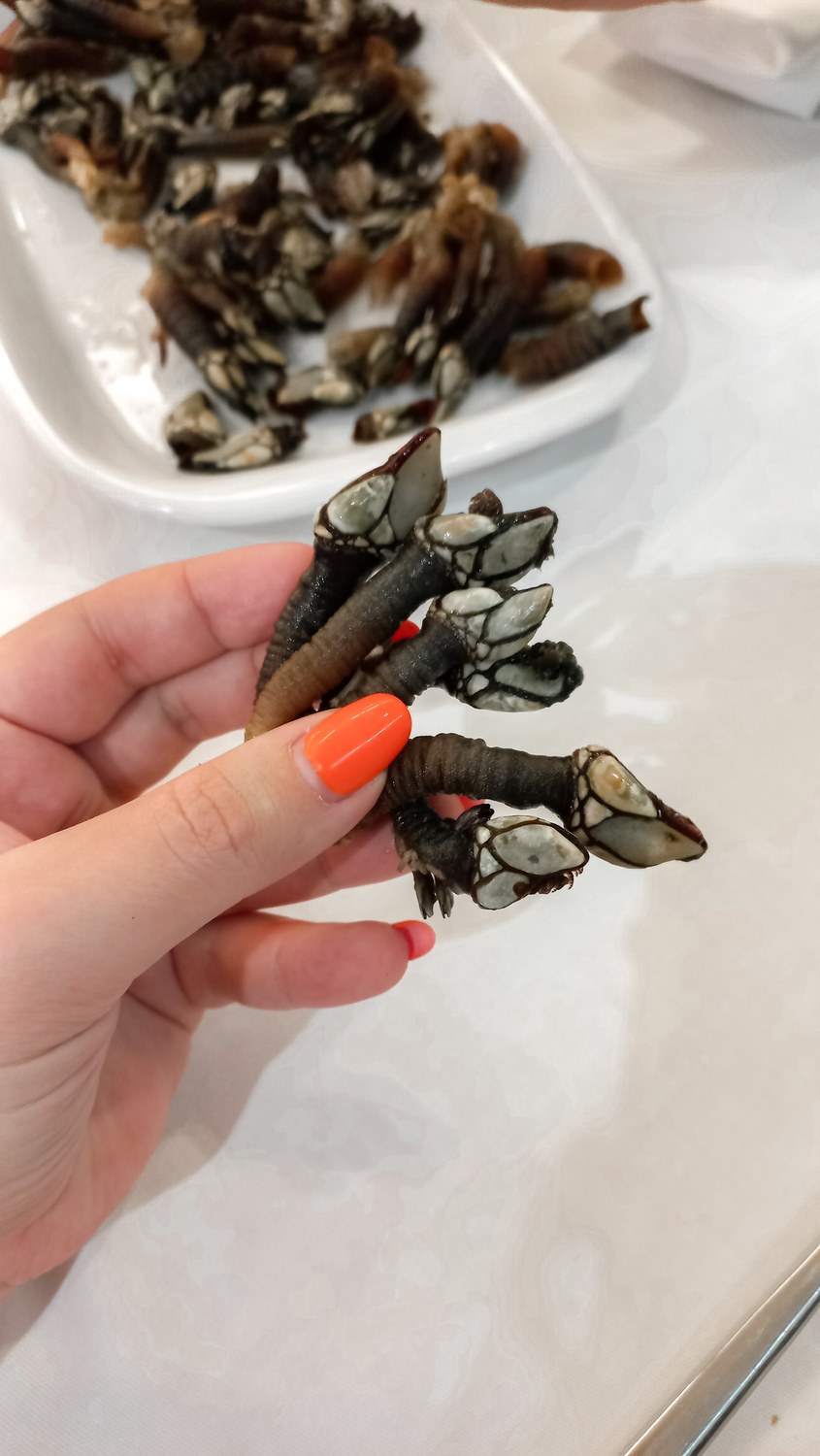
Percebes will be a new experience for many. Understanding how to eat them isn’t difficult. Percebes are not cooked but eaten alive. The protective skin is peeled off near the claw, and the creature is pulled out. The taste is similar to fresh mussels and lobsters.
It is also worth trying the devil fish. It's difficult to prepare on your own because the skin needs to be peeled off. Sometimes it's referred to as the "poor man's lobster." The texture and taste of the meat are somewhat similar to lobster.
Grouper is one of the tastiest fish, almost free of small bones. It’s neither lean nor fatty. The lean meat has layers of fat, somewhat resembling tuna. It was interesting to watch how the restaurant waiter deboned the fish.
What to See in Porto
Porto is one of the most beautiful cities in Portugal. Many people prefer Porto to Lisbon. It’s cozier, with fewer unsocial people on the streets. On the right side of the Douro River, the old city with its Cathedral stands. On the left side of the Douro River, you'll find the de Gaja wine cellars — known for port wine. It’s better to stay on the right bank, as there are more hotels and apartment options here. It’s worth booking an apartment with a kitchenette because you can buy fresh fish and seafood at the city's Bolhão market.
In Porto, there are quite a few parking lots on the outskirts of the old town. There are parking areas along the river, and we left the car in a multi-story parking garage. The parking rate is €0.15 - €0.40 for 15 minutes. The closer you are to the city center, the higher the price.
The 60-square-meter apartment with a kitchen cost less than €100. From them, you have a view of the cathedral, and it's just 100 meters to the observation deck. The hotel can be booked via a link, just click to make a reservation.
The view from Miradoura da Vitória, about 100 meters above a rented apartment. From the apartment window, there was a similarly great view, just framed by the buildings on the street.
Porto's city center is compact, and the pedestrian street Mouzinho da Silveira leads to the train station. It’s worth visiting the station, as its platform is decorated with azulejo tiles, featuring beautiful murals. From here, you can take the elevator up to the Luiz I Bridge and cross to the other side of the river. If you descend a bit into the metro, you save a good portion of the journey.
Porto train station. The platform is decorated with blue azulejo tiles. The blue azulejos became popular after the Portuguese reached China.
Right across the river, there’s a glass-walled restaurant with a stunning view of the entire city of Porto. You don’t have to go up high; you can also head down to the river and cross the lower part of the bridge. In the evenings, the riverside comes alive with the vibrant energy of Porto. While you’ll find plenty of interesting eateries in the upper part of the city, the narrow alleyways often lead to small restaurants that close early, though they offer delicious food.

The right bank of the Douro River and Porto’s old town. In the evening, this area comes alive with the main activities. On the left side, there is a bit less action, especially around Gala.
From the train station, we booked a sunset tour and tasting. The tasting was limited to one port wine without a vintage and a Porto cocktail. However, the tour compensated for this with visits to the most beautiful spots and a quick introduction to the city. It was definitely worth paying the 24 euros. For a better port tasting experience, it's recommended to visit the wineries on the left bank of the river or to book a tasting trip to the Douro Valley. The bar where we did the tasting had a larger selection of Porto wines.
Douro Valley
Traditionally, people travel from Porto to visit the Douro Valley. The banks of the Douro River are steep, and there are many viewpoints offering stunning views. Near Porto, the banks are more forested and covered with orchards. The conditions for grape growing here are likely worse than further upstream. On the first day, we spent only half a day in Douro and drove to the mountains near the Arouca suspended bridge. The next day, we returned early in the morning to the higher reaches of the Douro River valley, visiting the Garfula viewpoint. The road to the viewpoint is paved and offers very impressive views. That’s enough to get an impression of the Douro Valley, especially when combined with a visit to the São Leonardo restaurant near the viewpoint. It’s worth booking a table in advance – even in October, all the tables were reserved. Here you can try a Portuguese delicacy – roasted kid goat. The goats are roasted in an oven, and there’s a pot of rice nearby. The desserts are highly recommended.
A portion of roasted goat for one person is not available in all restaurants. It's considered a signature dish at the most popular and well-regarded restaurants.
The outdoor terrace of the São Leonardo restaurant. It was raining, clouds were rolling in, and everyone was eating inside, where there were huge panoramic views. The beauty revealed itself after the rain stopped in the afternoon.
Accommodation in the Douro Valley is quite expensive, with more luxury lodging options available.
A modern cabin in the mountains of Portugal. The accommodation is marked on the map as Quinta da Malhada.
Arouca Suspension Bridge
The Arouca Suspension Bridge was opened relatively recently. It is a very interesting landmark, and for a time, it was the longest suspension bridge in Europe, measuring 561 meters in length, with a height of 175 meters at the middle.
However, the whole complex makes an even greater impression. The parking lot is located 1.5 kilometers away from the bridge. From there, a scenic trail leads along the Paiva River. The path rises on a wooden pedestrian walkway. You can either return from the bridge or continue walking for about 7 kilometers to the village of Espiunca. About 2.5 kilometers into the trail, there is an option to exit at a point by calling a taxi. However, it's definitely worth completing the entire route, which gradually descends and is easy to walk. The route consists of a wooden walkway, sometimes suspended above the cliffs. The Paiva River flows nearby, and ancient settlements can be seen along the shore.
Arouca is part of the UNESCO-protected Geopark. The number of visitors to the park is limited, so advance reservation is required. Taxis are waiting in the village, and for 15-20 euros, they will take you back to the parking lot. Driving in the mountains is safe— all the roads are paved, of high quality, and well-maintained.
Tomar - The Templar Castle
Tomar is a good place to stay because the accommodation prices are relatively low, and it's just an hour's drive to Lisbon. In Lisbon, accommodation prices are much higher.
What to do in Lisbon
The taxi-hailing app is very useful here—it arrives quickly and is quite affordable. From the car rental parking to Lisbon, the fare was 10 euros, and from Lisbon to the airport, it cost 7 euros. It's also worth using taxis within Lisbon itself, as trips between locations just a few kilometers apart cost around 3–4 euros and taxis arrived in 3–5 minutes.
The central part of Lisbon is limited by hills and is not very large. During the day, it's worth visiting the sites in the lower areas, and in the evening, take a sunset tour of the viewpoints in the eastern part of the old town.

Lisbon Sunset from Castelo de São Jorge
Tile Museum
The Portuguese are famous for their Azulejos—decorative ceramic tiles. These tiles are part of the cultural heritage left by the Moors, who ruled the country for a time. The museum presents the history of tiles and showcases some of the finest Azulejo tile artworks. Creating Azulejos requires a lot of work. The tiles are initially smoothed, covered with glass powder, painted, and later coated with mineral powders. After firing, the result is an original tile, often a large section of a painting. During the firing process, the minerals change color, which makes it a highly skilled technique.
Under Moorish influence, tiles were produced in various colors. Later, when the Portuguese reached China, blue-and-white tiles, in the style of Chinese porcelain, became widespread. Modern artisans use multi-colored, embossed designs. Several hours will pass in the blink of an eye. For those interested in design or working in interior design, this museum is a true treasure trove of ideas.
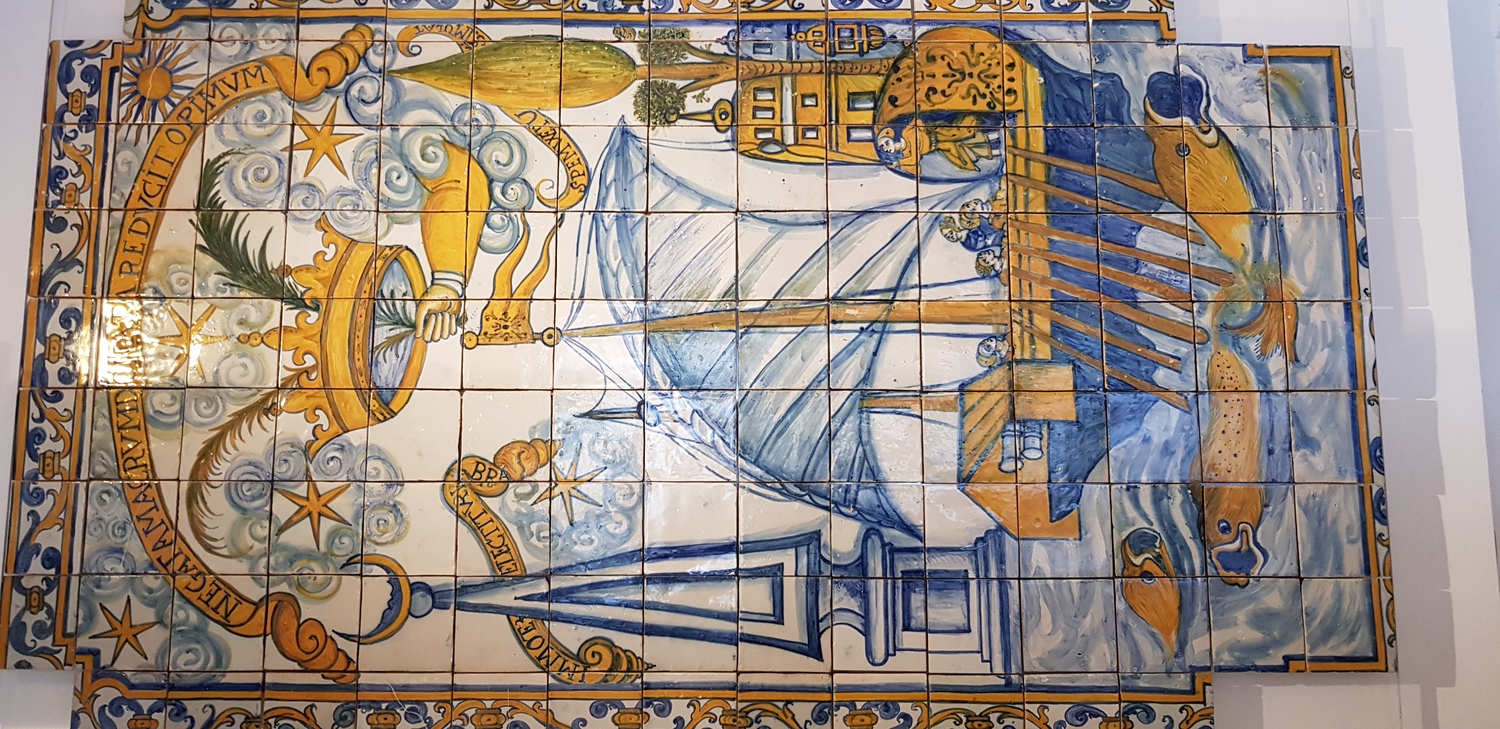
Early Azulejo Tiles
Time Market
Near the river and the train station is the vast Time Market. Before noon, the market sells fish and agricultural products. Throughout the day, a huge food pavilion nearby buzzes with activity. Numerous small cafés prepare dishes that can be sampled right there. The prices are quite high. For example, a sandwich with marinated sardines and an escabeche-style sauce cost 10 euros, though it was very well made. A small serving of mussels with a scoop was 6 euros—nothing special.
After strolling around Lisbon, and especially if you venture a little further from the center, you can find much cheaper eateries that serve food just as good. From here, you can also start a leisurely walk along the waterfront promenade, heading towards the cruise terminal.
The dominant format at Time Market is a tasting experience. During lunchtime, it is very difficult to find a free seat.
Stroll Along the Lisbon Promenade
You can start your walk along Lisbon's promenade from Time Market and its adjacent eateries. Along the way to the cruise terminal, you can stop to admire the Praça do Comércio square. Before the terminal, numerous paths and trails begin, leading up to Lisbon Castle. Along the route, you'll find many viewpoints, bars, cafés, and restaurants offering stunning views of the city or the terminal.

Praça do Comércio Square in the center of Lisbon
Lisbon's Center – Martim Moniz Square
Castelo de São Jorge, Lisbon Castle
On the eastern side of Lisbon’s old town, the Castelo de São Jorge stands on a hill above the city. You can take a taxi up to the castle or walk through the narrow streets of the old town. Part of the way can also be covered by the ancient yellow tram. While it's not a major attraction, it's better to walk around the castle itself. The golden hour at sunset is especially beautiful here, and it's where the most stunning sunset photos of Lisbon are taken.
The entrance is paid, but it’s worth it. The Portuguese emphasize that the entrance fees go towards the restoration of these monuments, which is a very fair approach.
At the entrance, you can try Portugal’s version of dumplings, bolinhos de bacalhau. They are similar to dumplings, but not quite the same, with a completely different flavor. The outer shell is made from boiled potatoes, and the filling is salted cod and cheese. It's a very interesting taste, and it pairs wonderfully with white port. In Portugal, drinking in public places is not prohibited, so it’s quite nice to have a snack and a drink while enjoying the sunset.
At the castle, you can walk along the walls and take in the views of the city. After leaving the castle, you can visit several more observation points, known as Miradouros, offering great vistas of Lisbon.
Lisbon's Observation Points
From the Miradouro da Senhora de Monte, you can enjoy a panoramic view of the entire city, including the beautiful castle. Right by the viewpoint, there is a café with a stunning view of Lisbon. If you descend a little along the narrow streets of Lisbon, you’ll reach an area with more affordable cafés and accommodations. This area is marked by Tulsi Restaurant, a great and quite inexpensive spot serving Indian food. Many of the people you’ll see on the streets appear to be of Asian or African descent, likely local residents. However, the cafés are filled with many young travelers.
Tours in Lisbon
There are many tours in Lisbon, although they can be quite expensive. A popular tuk-tuk ride around the city costs around 100 euros per hour. You can also take boat tours on small motorboats. Walking tours of the city center are also very popular.
It’s quite popular to take a boat ride and admire Lisbon from the river side.
Where to Stay in Portugal
In Portugal, there is a wider range of options when booking through Booking.com. Airbnb.com, which we often used for booking more spacious and affordable apartments, has fewer listings here. As always, Booking.com's map is very helpful, showing available accommodations, their occupancy, and prices.
Car Rental in Portugal
Most international car rental companies operate in Portugal. However, as in many countries, better terms and more flexible conditions can often be found with local rental companies. In Portugal, there is quite a high fee for picking up and returning a car at night or early in the morning.
Local companies offer better insurance terms. The price can vary if there are multiple drivers. Local companies tend to be more flexible about this.
The price also includes an automatic toll payment device, Via Verde. Modern highways are toll roads, and in some, you can pay traditionally, while in others, only automatic toll collection is available. If you ever receive fines for not noticing a toll charge, you'll definitely want to use this device.
Cheap flights to Portugal
If you arrive early in the morning, you'll be tired because you'll be traveling through the night. Arriving during the day means losing half of the first day. If you fly late at night, it’s not as bad, but you still get very tired traveling overnight.
Flying with budget airlines can be a bit risky. It's important to allow enough time for a longer layover at the connecting airport.
It’s worth “hunting” for tickets to Portugal well in advance—start looking up to a year ahead. Sometimes when you're hunting for cheap flights to interesting destinations, you might miss Portugal but find another good deal. A very useful app for finding great deals is Azair.

What to eat in Portugal
Portugal is a country with a highly developed culinary tradition. It has a rich blend of cultures and influences from many former colonial countries. Agriculture, and especially livestock farming, thrive here. The Atlantic Ocean has also always provided Portugal with fish and seafood.
Salted cod dishes, bacalhau, were traditionally imported from Scandinavia and the New World. The salted cod caught in places like Lofoten was transported to Portugal. The fish would be compressed and flattened for preservation. The smell of raw cod is not very pleasant, and it can be smelled from far away in stores. This is likely a rustic dish with many variations. It is often paired with potatoes, cheese, and nearly every imaginable ingredient. There are around 1,000 different recipes using salted cod, and bolinhos de bacalhau, which resemble dumplings, are also made from it.

Francesinha is the perfect sandwich for a traveler: filling, warm, and quite affordable. It is believed to have originated in Porto in the mid-20th century. There are several variations: francesinha à barcarola – with shrimp, francesinha de carne assada – with roast pork, and francesinha à cascata – with mushrooms.
Portugal offers a wide selection of fresh fish. Only when there are strong waves in the Atlantic for a prolonged period does the availability decrease slightly. Fish is sold both as dishes in restaurants, and you can also buy it by the kilogram. The most expensive fish are grouper, stone bass, and turbot.
Wines of Portugal
Portugal is often imagined as the country of port wine. Port is a fortified wine made from grapes grown in the Douro Valley. The grapes are mostly native varieties, and wines are often a blend of different types. During fermentation, when some sugar remains, strong alcohol is added to stop the fermentation process. What you will typically find in bars is inexpensive port, and it is uncertain whether it has been properly aged in barrels. More expensive ports are aged in oak barrels for 10-20 years. Here are a few terms you’ll see on bottles:
- Ruby ports are aged in metal or concrete containers, and their flavor doesn’t improve as they age.
- Tawny ports are aged in wooden barrels, where they gradually turn brown and acquire a nutty flavor.
- Fine – a young port aged for a few years in barrels.
- Vintage – this refers to the best years for port wine, which are usually aged in barrels for a short time to preserve their vibrant color and then bottled for long-term aging. A good port starts at around €20 per liter.
The wines in Portugal are excellent and should not be underestimated. It's especially worth paying attention to the old white grape varieties. A good bottle of wine starts at around €8.
What to Pack for a Trip to Portugal
For an 8-night trip, the following will be needed for 1 traveler, assuming laundry facilities are available:
- 4 pairs of socks
- 2-3 pairs of underwear
- Shorts
- 2 short-sleeve shirts
- 1 long-sleeve shirt (if traveling off-season or to the mountains)
- 1 pair of travel shoes
- 1 pair of sandals
- 1-2 pairs of long pants (2 if off-season or if rain is forecasted)
- 1-2 pairs of shorts
- A jacket for the off-season or for the mountains
- A head covering (hat, cap)
- A light towel
- A diving mask and snorkel
- Toothbrush
- Toothpaste
What to see in Umbria?
Monuments, restaurants and local foods
How to enjoy Clermont-Ferrand
Clermont-Ferrnad, located in Auvergne a green and peaceful region, is the perfect place if you want to discover France in an unusual way.
Morocco by car
Morocco by car. The full itinerary of a car trip in Morocco.
Road trip: 15 days accross Europe
Go through 4 different countries and visit new places, cultures and ways of life in a 12 days road trip accross Europe.












